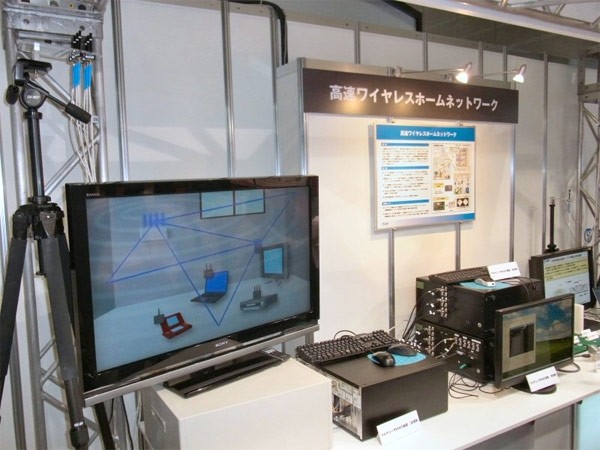The Wi-Fi Alliance has been working to push wireless speeds into gigabit territory for a couple of years now, and it appears that Japanese mobile operator NTT DoCoMo is on board to make this a reality. During the Wireless Technology Park event in Yokohama City, NTT demonstrated a prototype 802.11ac Wi-Fi implementation, and though there's still work to be done towards faster speeds in multi-user scenarios the company is working to have it ready by 2013.
Currently, higher speeds are being achieved with a single receiver, whereas in the three-user setup demonstrated by NTT the speed was dropped to 120Mbps per user at the same time. The wireless transmission was realized by using a space division multiplex connection method based on multi-user MIMO (multiple input multiple output) technology developed by the company and the same 5GHz frequency band used in Home Wi-Fi systems today.

PhysOrg.com reports in further detail: "six antennas were used to deliver the signal, and three to receive it. The new technology developed by NTT relies on a Field Programmable Gate Array (FPGA) that utilizes mathematical algorithms to set space divisions for the data as its being multiplexed into its individual parts, and then of course to do the reverse on the other end. According to NTT, this processing could be done with a dedicated chip, instead of the FPGA, should the new standard be approved by the International IEEE standards body."
Compared to 802.11n, the new spec should allow a wider RF bandwidth (up to 160 MHz instead of 40 MHz), more MIMO spatial streams (up to 8 instead of 4), multi-user MIMO, and a better modulation scheme. All this should enable several usage scenarios that are impractical with today's wireless standards, such as simultaneous streaming of HD video to multiple clients throughout the home, fast synchronization and backup of large files, wireless displays and more.